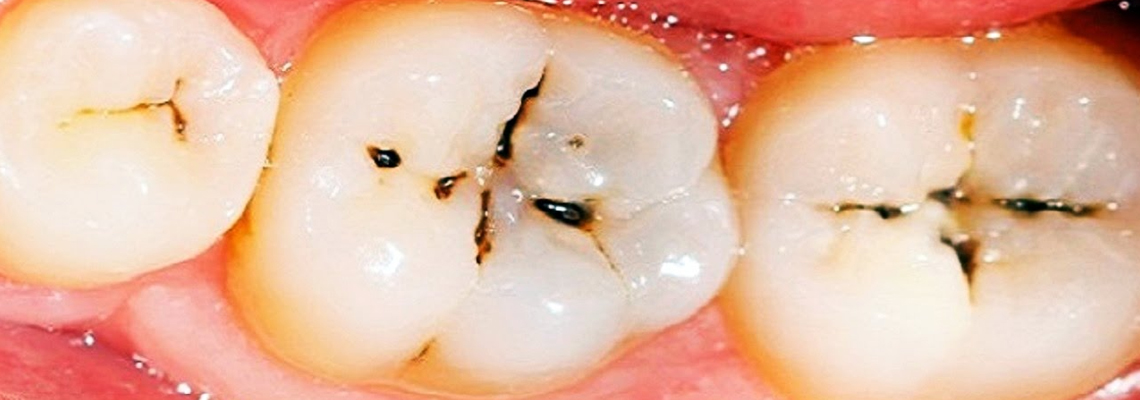Got Cavities? Now What?

Got Cavities? Now What?
If you or your kid has a cavity, you are not alone. More than 3 million cavities are detected annually in the United States. Children miss school the most often due to cavities, and according to Today.com, 90% of adults have experienced tooth decay at some time in their lives. Your immediate concern after learning that you have a cavity is probably “Now what?”
Depending on how severe the cavity is, the answer to that query will vary. When a cavity is found early, your dentist will want to conduct a dental fillings process and discuss the various filling kinds with you.
Getting Dental Fillings
The first step in filling a tooth is for the dentist to numb the region around the tooth using a local anesthetic to lessen or eliminate any pain. Using a guard or other dental device, the dentist will isolate the tooth to avoid contamination and keep it dry. The decaying portion of the tooth will then be removed by the dentist using a special instrument made to accommodate the cavity’s size and position in your mouth. This may involve the dentist using a laser, drill, or air abrasion tool that they have had thorough training on.
In order to prevent germs, decay, or debris from causing difficulties in the future, the dentist will carefully clean the tooth before preparing it for the filling. The filling material will be applied by the dentist, who may need to use a special light to cure or harden it. The dentist will assess your bite to guarantee perfect alignment in the final part of the filling treatment, and will then polish the filling to make it as smooth as your other teeth.
Types of Fillings
Your dentist has a variety of materials at their disposal to fill your cavity. Listed below is a list of popular filler kinds.
Amalgam (or Silver)
This kind of filler, which has been around for almost a century, is made of a combination of metals, including mercury, tin, copper, silver, and zinc. They are one of the least expensive solutions for filling and are strong and long-lasting. The majority of dentists and patients choose tooth-colored fillings instead of dark, metal ones since they are less noticeable due to their lighter shade.
There have been questions concerning the use of these fillings and their link to illness since they contain mercury, a recognized toxin. However, the American Dental Association (ADA) and other public health groups have formally stated that there is insufficient evidence to conclude that consumers are harmed in any way by amalgam fillings. The tiny quantity of mercury is combined with the other metals to form a stable alloy that has been used without incident in millions of dental filling treatments.
Gold
Gold’s durability has long been acknowledged. Gold fillings are the most costly choice even though they often last the longest. In addition to expense (and insurance companies’ reluctance to cover them), several drawbacks include their visibility and the chance for a galvanic shock, a condition that causes a brief acute pain when near a silver filling or a saliva encounter. Both are unusual. However, gold is a reliable alternative if you want to spend less time in the dentist’s chair and aren’t against paying the money.
Composite
Acrylic resin and powdered glass are combined to create composite materials. In contrast to gold and amalgam, which are two metal substitutes, composite tooth fillings are more discreet since they may be color-matched to your original tooth.
However, they are more brittle and prone to chipping than their metal counterparts. Although they don’t require as much tooth wear down during the dental filling operation, they can give support where other fillings can’t because of their attachment to the tooth.
Porcelain / Ceramic
A more natural appearance is another advantage of porcelain fillings, but they are also more delicate and frequently more expensive than metal fillings. Since they are frequently made in a lab before being applied to your tooth, they usually require more than one dental appointment.
Resin / Glass Ionomer
Small regions of decay, such as those in youngsters, or decay below the gum line are the most common uses for these sorts of fillings. Since they are so delicate, they aren’t put in places where they will be chewed on or put under a lot of strain.
There are several different types of fillings to take into consideration if you discover that you have a cavity during your upcoming dental examination. To determine the appropriate filling for your dental filling process, you should see your dentist.
Dr. Motiwala in International Press
To access the article, kindly click the logo of the NEWS website below.
 |
 |
 |
Don’t Wait, Contact Us Now!
Dial +91 99596 14584 to speak with Dr. Motiwala Dental Clinic & Implant Center about your treatment choices and avoid paying any sinus lift costs in India. Contact us using the form on our CONTACT US page, and we’ll get back to you as soon as we can with the information you require.

